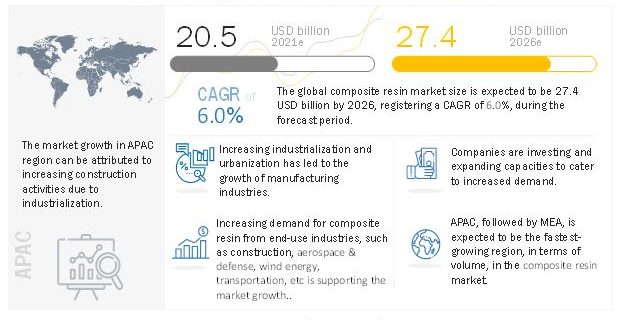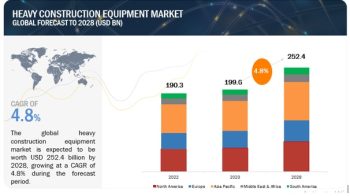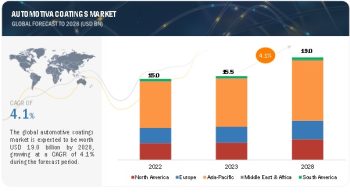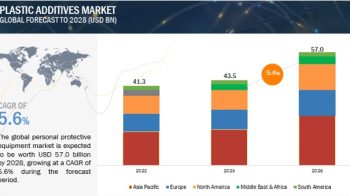
The report “Composite Resin Market by Resin Type (Thermoset, Thermoplastic), Manufacturing Process (Layup, Filament Winding, Injection Molding, Pultrusion, Compression Molding, Resin Transfer Molding), Application and Region – Global Forecast to 2026” The composite resin market size is projected to reach USD 27.4 billion by 2026, at a CAGR of 6.0%, during the forecast period.
Browse 223 market data Tables and 79 Figures spread through 312 Pages and in-depth TOC on “Composite Resin Market by Resin Type (Thermoset, Thermoplastic), Manufacturing Process (Layup, Filament Winding, Injection Molding, Pultrusion, Compression Molding, Resin Transfer Molding), Application and Region – Global Forecast to 2026”
Download PDF Brochure https://www.marketsandmarkets.com/pdfdownloadNew.asp?id=66717271
The composite resin are used in a number of applications such as construction & infrastructure, transportation, electrical & electronics, pipes & tanks, wind energy, marine, aerospace & defense, and other applications, which helps the market to grow rapidly. In addition to this, the growing demand in for composite resin in various end-use industries from emerging economies such as China, and India is also propelling the growth of the market.
However, the outbreak of COVID-19 has created ripples in various end-use industries, leading to reduced demand for composite resin. Due to the lockdown scenario in Europe and North America, the demand for composite resin from construction, transportation, wind energy, etc, declined sharply in the first quarter of 2020.
Thermoset composite resin to have the largest market share in the composite resin market during the forecast period.
Thermoset composite resin is the major resin. It is used as a matrix with carbon, glass, natural, and aramid fibers. These resins are widely used for manufacturing of composites, as when uncured, they are in the liquid state at room temperature. This unique property of thermoset
resins allows convenient impregnation of reinforcing fiber. The major types of thermoset resins which are widely used in composites are unsaturated polyester resin, epoxy resin, vinyl ester resin and others such as phenolic, polyimide, etc. The unsaturated polyester resin segment has a major share in the global thermoset composite resin market, owing to its wide acceptability in end-use industries such as construction, transportation, aerospace & defense, wind energy, etc.
Layup manufacturing process is predicted to register the largest share in the global composite resin market during the forecast period, in terms of value.
The layup manufacturing process led the global composite resin market. In this process, the orientation of the fibers can be controlled as needed so that they can absorb maximum stresses to which they are subjected. Layup process is also used in the production of high quality colored composite surfaces. The process utilizes thermoset resins, such as polyester and epoxy, for the production of composites using carbon or aramid long fiber as reinforcement. In some applications, vinyl ester and phenolic resins are used as matrix in the layup process. It is widely used for composite parts manufacturing in wind energy and marine applications, primarily because of low-cost tooling required for manufacturing a wide range of products
The wind energy application segment is expected to account for the largest share in the composite resin market during the forecast period, in terms of value.
Wind turbine blades are the key components in wind power generation system. Wind turbine blade manufacturing has been growing exponentially since 2005 and the production is expected to triple in the next decade. Fiber-reinforced composites in wind turbine blades are widely used in the development of large-scale wind turbines. Composite resin is used to manufacture wind blades and other composite components to withstand the harsh environment, especially in offshore applications. It is expected to be the most promising application segment, especially in APAC, in the next five years due to greater focus of India and China on producing electricity through renewable sources. The European government is also supporting the use of renewable and energy-efficient systems to boost the wind energy industry in the region. In Europe, two-thirds of the non-nuclear research budget has been allocated to research and development on renewable and energy efficiency systems which in turn, will augment the growth of the composite resin market.
APAC region to account for the largest market share in the composite resin market during the forecast period.
APAC was the largest composite resin market, in terms of value, in 2020. The increasing use of composite resin in applications such as construction, transportation, wind energy, aerospace & defense, and others is expected to provide new growth opportunities to the market. Furthermore, high economic growth, growth in manufacturing industries, availability of cheap labor, growing end-use markets, and the global shift of production facilities from developed markets to developing markets are some of the key factors driving the composite resin market in Asia Pacific.
The key players in the market include Huntsman International LLC (US), Hexion, Inc (US), The Dow Chemical Company (US), Ashland Global Holdings, Inc (US), Sumitomo Bakelite Co., Ltd, (Japan), Schott Bader Company Limited (England), Royal DSM N.V (Netherlands), BASF SE (Germany), Kukdo Chemical Co., Ltd. (South Korea), Polynt S.p.A (Italy), SABIC (Saudi Arabia), Arkema SA (France), Evonik Industries AG (Germany), Atul Ltd (India), Allnex Composites (Germany), Nan Ya Plastics Corporation (Taiwan), Showa Denko K.K (Japan), Swancor Holdings Co., Ltd (Taiwan). These companies are involved in adopting various inorganic and organic strategies to increase their foothold in the composite resin market.


